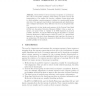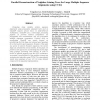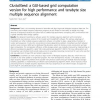197 search results - page 16 / 40 » Improving pairwise sequence alignment accuracy using near-op... |
COMPLIFE
2005
Springer
15 years 5 months ago
2005
Springer
Abstract. Most software tools in homology recognition on proteins answer only a few specific questions, often leaving not much room for the interpretation of the results. We devel...
105
click to vote
BMCBI
2006
14 years 12 months ago
2006
Background: Several entropy-based methods have been developed for scoring sequence conservation in protein multiple sequence alignments. High scoring amino acid positions may corr...
115
click to vote
BMCBI
2005
14 years 11 months ago
2005
Background: Several problems exist with current methods used to align DNA sequences for comparative sequence analysis. Most dynamic programming algorithms assume that conserved se...
IPPS
2009
IEEE
15 years 6 months ago
2009
IEEE
Computing large multiple protein sequence alignments using progressive alignment tools such as ClustalW requires several hours on state-of-the-art workstations. ClustalW uses a th...
104
click to vote
BMCBI
2010
14 years 12 months ago
2010
Background: There is an increasing demand to assemble and align large-scale biological sequence data sets. The commonly used multiple sequence alignment programs are still limited...



